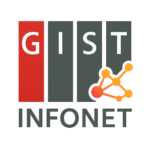| No | Date | Title | Speaker | Presentation | Discussion |
| 1 | 2014-10-08 | Disorder-mediated enhancement of fiber numerical aperture | Hwanchol Jang | (pdf) | |
| The numerical aperture (NA) of a multimode optical fiber sets the limit of the information transport capacity along the spatial degree of freedom. In this Letter, we report that the application of a highly disordered medium can overcome the capacity limit set by the fiber NA. Specifically, we coated the input surface of a multimode fiber with a disordered medium made of ZnO nanoparticles and transported a wide-field image through the fiber with a spatial resolution beyond the diffraction limit given by the fiber NA. This was made possible because multiple scatterings induced by the disordered medium physically increased the NA of the entire system. Our study will lead to enhancing the spatial resolution of fiber-based endoscopic imaging and also improving the information transport capacity in optical communications. | |||||
| 2 | 2014-10-17 | Faster STORM using compressed sensing | Woongbi | ||
| In microscopy, compressed sensing was proposed for a sparse signal recovery technique by using highly overlapping fluorescent spots. | |||||
| 2 | 2014-10-31 | Optimizing Spatial Filters by Minimizing Within-Class Dissimilarities in Electroencephalogram-Based Brain–Computer Interface |
Younghak | ||
| To extract features that are robust and invariant, this paper proposes a novel spatial filtering algorithm called Kullback–Leibler (KL) CSP. The CSP algorithm only considers the discrimination between the means of the classes, but does not consider withinclass scatters information. In contrast, the proposed KLCSP algorithm simultaneously maximizes the discrimination between the class means, and minimizes the within-class dissimilarities measured by a loss function based on the KL divergence. The performance of the proposed KLCSP algorithm is compared against two existing algorithms, CSP and stationary CSP (sCSP) |
|||||
